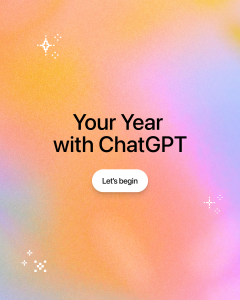Lovable approaches 8 million users, targeting more corporate employees in AI coding.

Image Credits:Web Summit
Lovable’s Rapid Growth: Transforming the Coding Landscape
Lovable, the innovative AI coding platform based in Stockholm, is making waves in the tech industry. In a recent discussion, CEO Anton Osika revealed that the platform is nearing 8 million users—a significant increase from just 2.3 million active users reported in July. Founded less than a year ago, Lovable is witnessing an impressive surge, with 100,000 new products being developed on the platform daily.
Funding Success and Future Valuations
The startup has attracted substantial attention from investors, raising a total of $228 million, including a remarkable $200 million funding round this summer that pegged the company’s valuation at $1.8 billion. While speculation has emerged suggesting that potential investors are eyeing a valuation of $5 billion, Osika emphasized that Lovable is not currently in need of additional capital and opted not to delve into future fundraising strategies.
Revenue and Market Skepticism
At a recent Web Summit event in Lisbon, Osika refrained from sharing Lovable’s current annual recurring revenue (ARR). The company celebrated hitting $100 million in ARR in June, yet doubts linger about the sustainability of the vibecoding trend. Research by Barclays, alongside Google Trends, indicated a decline in traffic to several popular services, including Lovable, which saw a 40% drop by September. According to Barclays analysts, this decline raises questions about whether the vibecoding phenomenon has peaked or is merely experiencing a temporary lull.
User Retention and Employee Growth
Despite these concerns, Osika asserts that user retention remains robust, citing over 100% net dollar retention—indicating that users are increasing their spending over time. The company has also recently surpassed the 100-employee mark, actively recruiting leadership talent from Silicon Valley to fortify its Stockholm base.
Visionary Origins and Diverse User Demographics
Lovable’s journey began with GPT Engineer, an open-source tool created by Osika that gained traction within developer circles. However, he soon recognized a broader opportunity aimed at the 99% of people who lack coding knowledge. “I woke up days after building GPT Engineer and realized we could reimagine software development,” Osika recalled, illustrating the moment he shared his vision with his co-founder.
This visionary approach has led to a diverse user base. Over half of Fortune 500 companies leverage Lovable to “supercharge creativity.” Remarkably, Osika recounted stories of an 11-year-old in Lisbon who created a Facebook clone for school and a Swedish duo generating $700,000 annually from a startup launched on the platform just seven months ago.
The Power of User Experience
“What I hear from people trying Lovable is, ‘It just works,’” Osika stated, pointing to the Swedish design ethos that influences the platform’s user experience. His focus on intuitive design appears to resonate well with users, fostering a culture of creativity and rapid prototyping where users can quickly test ideas without lengthy presentations.
Addressing Security Concerns
While the platform excels in user experience, security remains a critical issue for the vibecoding sector. A recent incident involving an app built with vibecoding tools led to a leak of 72,000 images, raising alarms regarding data safety. Osika acknowledged the challenge and shared that Lovable is prioritizing hiring security engineers to enhance its security measures. Before deployment, Lovable now conducts multiple security checks, although users creating sensitive applications, like banking services, must still consult security experts as they would in traditional development practices.
Competitive Landscape
When questioned about competition from giants such as OpenAI and Anthropic, whose models power Lovable, Osika maintained a collaborative perspective. He believes the market can accommodate multiple winners and emphasized the importance of promoting human creativity and agency. “If we can enable anyone with good ideas to build businesses, that should be celebrated,” he remarked.
Balancing Growth and Workplace Culture
Despite the excitement surrounding Lovable’s growth, Osika appeared relaxed and more interested in discussing workplace culture than the company’s rapid ascent. Donning a simple beige T-shirt and button-down, he conveyed a commitment to team well-being, pushing back against the hustle culture prevalent in Silicon Valley. “I care that everyone at the company is mission-driven,” Osika affirmed, noting how many team members juggle their professional lives with parenting responsibilities. “They’re not working 12 hours a day, six days a week,” he insisted, although he acknowledged that startup demands might lead to longer hours than typical jobs would require.
Conclusion: A Vision for the Future
As Lovable continues to gain momentum, its mission of building “the last piece of software” remains clear: a platform unifying all aspects of product development through an accessible interface. By enabling teams to transition from “memo” to “demo,” Lovable is not just a tool for development but a catalyst for innovation. The future looks promising for both the company and its diverse user base, poised to reshape how software is created and understood.
Thanks for reading. Please let us know your thoughts and ideas in the comment section down below.
Source link
#Lovable #nearing #million #users #yearold #coding #startup #eyes #corporate #employees





